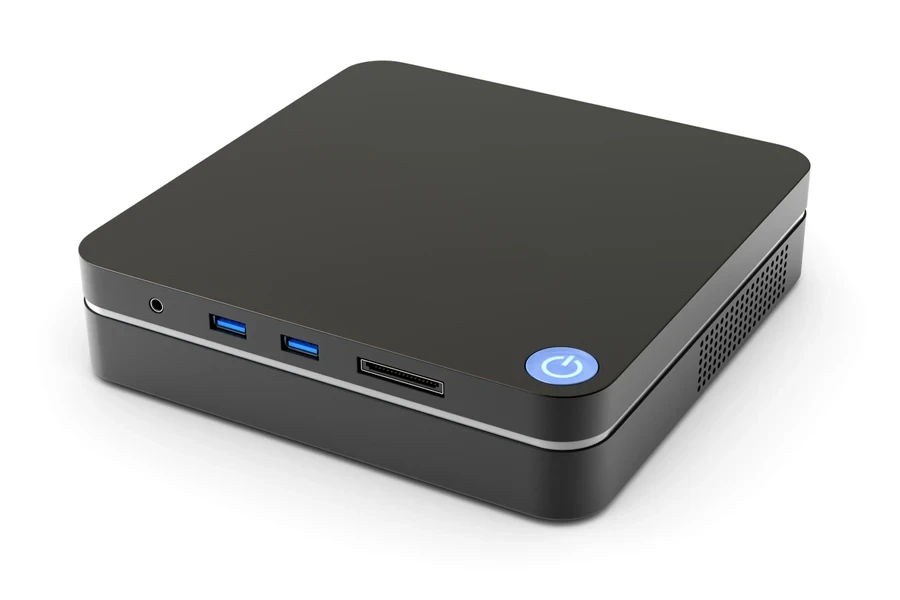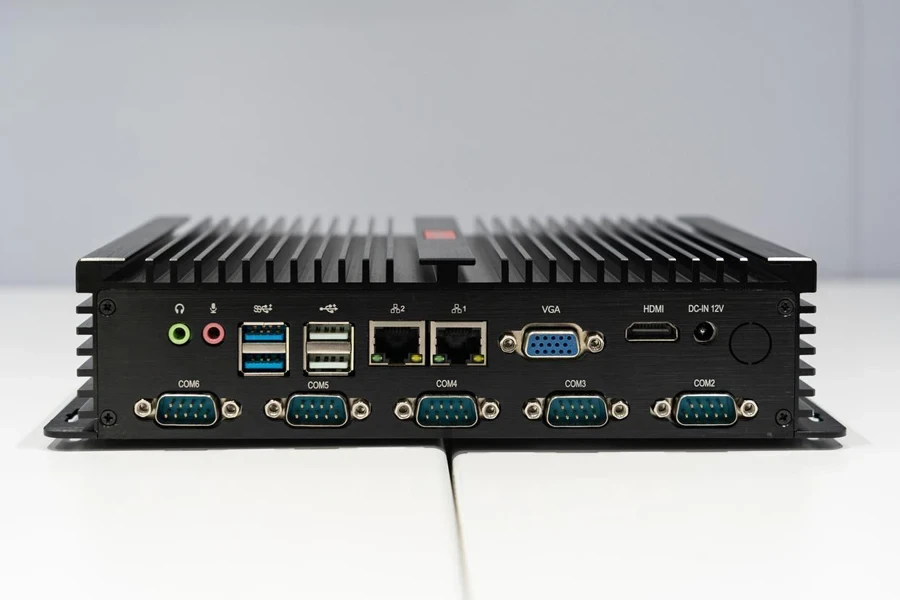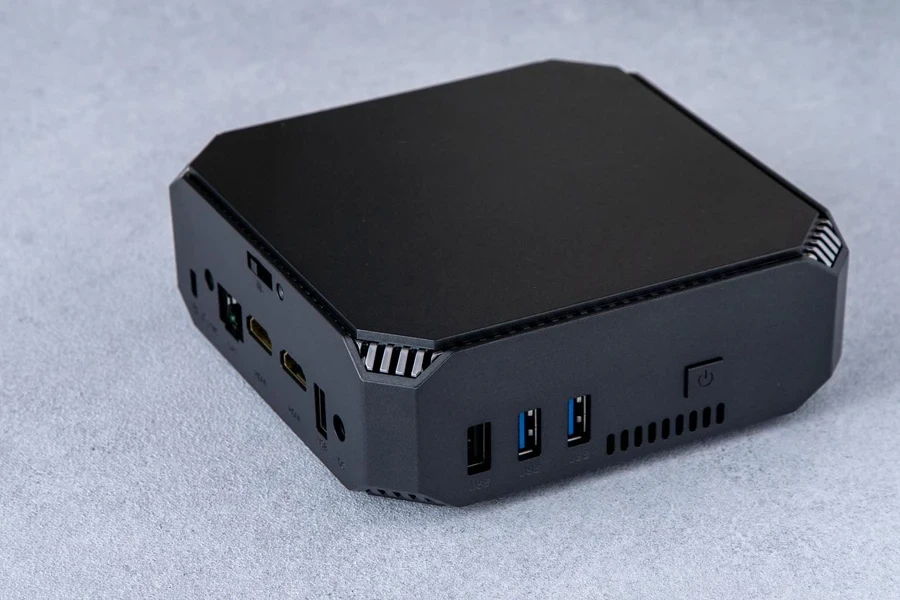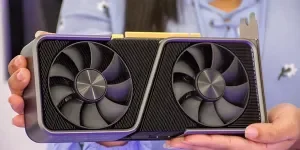Mini PCs have become an essential part of modern computing, offering powerful performance in compact, space-saving designs. These small yet capable devices are ideal for businesses seeking efficiency without compromising on functionality. From office setups to specialized tasks like media editing or digital signage, mini PCs provide flexibility and reliability.
Their small form factor makes them perfect for environments where space is limited, while their advanced processing capabilities ensure smooth operation across various applications. Making the right choice in mini PCs can significantly boost productivity and streamline operations.
Table of Contents
Understanding Mini PCs: Types and Uses
Market insights for mini PCs in 2025
Key considerations when selecting a mini PC
Top mini PC models and their features
Conclusion
Understanding Mini PCs: Types and Uses

Different Types of Mini PCs
Various types of mini PCs are available to meet the requirements and preferences of users today. Some serve as desktops for basic tasks at a reasonable price point and with added convenience for daily use, like web browsing, office work, or streaming media content. In contrast, high-performance mini PCs offer increased power in size, often featuring advanced processors and graphic cards that make them suitable for tasks that demand higher performance, such as gaming, content creation, and other intensive applications.
Common Applications of Mini PCs
Mini PCs are versatile and can work in various settings. They’re perfect for homes and offices because they save space without sacrificing functionality. For signs and interactive kiosks, mini PCs are the go-to choice since they can run nonstop with little power. Also, their small size makes them great for remote tasks and IoT uses. You can easily fit them into smart setups or use them as edge computing tools.
Market insights for mini PCs in 2025

Market trends and growth
The mini PC market is expected to experience growth in the upcoming years, with estimates indicating a value of $34.77 billion by 2028 and a projected annual growth rate of 11.1% starting from 2023 onwards. Various factors, such as the rising need for energy-efficient computing solutions, contribute to this growth trend. The popularity of mini PCs has surged as companies and professionals prefer them for their designs and high-performance features. Moreover, the trend toward remote working and the digital evolution across fields is speeding up the requirement for effective mobile computing options. With businesses putting resources into adaptable technology setups, the request for small personal computers is expected to grow.
Competitive landscape
With many firms continuously developing to satisfy the growing need for space-efficient, energy-saving computing solutions, the small PC industry is quite competitive. Many top technological companies are concentrating on creating environmentally friendly models that provide low power consumption and sustainability as the first priority. Apart from providing conventional desktop replacements, these companies are progressively including small PCs in sectors like digital signage and smart home automation. Mini PCs are now practical substitutes for bigger desktop systems due to developments in graphics, storage, and computing capability. Mini PC technologies are probably going to see greater development as companies seek more flexible systems that provide both performance and portability.
Key considerations when selecting a mini PC

Processor and performance requirements
Among the most important components of a mini PC is its CPU. A dual-core CPU would be sufficient for simple chores, but a quad-core CPU or above is advised for more demanding uses like gaming or content creation. High-end versions with CPUs like Intel Core i7 or AMD Ryzen 9 are perfect for jobs like video editing and 3D rendering, where speed and multitasking are vital since performance is tightly related to the speed of the CPU. As workload rises, these models guarantee scalability and flawless performance.
Graphics and visual capabilities
Depending on the work at hand, graphics capabilities are quite vital. For office work or online browsing, integrated graphics are plentiful, but separate graphics cards like NVIDIA RTX or AMD Radeon are vital for gaming or film creation. Particularly for jobs requiring high-resolution images, discrete GPUs provide outstanding rendering capability. Moreover, for those engaged in digital signage, video creation, or high-end gaming settings specifically, compatibility for 4K resolution has grown to be a major determinant of the mini PC choice.

Memory and storage considerations
Efficiency in multitasking depends much on RAM. 8GB of RAM is typically sufficient for simple chores, while 16GB or more is advised for heavy-duty work, including virtual machines or video editing. Storage options usually consist of SSDs, which have far higher read/write speeds than HDDs; they help to increase the general performance and load times of applications. Although SSDs are more dependable and efficient, HDDs still provide more storage for less money, which would be appropriate for people who prioritize big storage capacity.
Connectivity and expansion options
Connectivity is very important for a mini PC because it helps connect various peripherals effectively for tasks requiring it to function well. It’s essential to have ports like USB-C, HDMI, and Ethernet that are necessary for operations. Good connectivity ensures the system stays relevant in the future and can adapt to the changing technology needs of businesses, so it’s beneficial to have models with options for upgrading RAM or adding storage. In addition to that, having capabilities like Wi-Fi 6 is crucial for ensuring reliable and fast connections.
Energy efficiency and sustainability
Energy efficiency is becoming more important when calculating long-term costs nowadays. Mini PCs typically consume less power than desktops, which helps decrease operational expenses. The rising popularity of eco-designs incorporating recycled materials and energy components is noticeable. These eco-friendly technologies play a role in reducing carbon footprints and supporting sustainability while maintaining performance levels intact, making them an appealing option for businesses dedicated to lessening their footprint.

Top mini PC models and their features
Best Models for General Office and Home Use
Compact desktop computers that balance performance and affordability are perfect for work and home use settings. They usually come in compact sizes and have enough power to handle everyday activities such as writing documents, surfing the internet, and enjoying multimedia content. Most of them are powered by Intel or AMD chips, guaranteeing proper functioning for regular tasks. Featuring 4GB to 8GB RAM choices, these systems are well-prepared to run office applications.
High-End Mini PCs for Specialized Tasks
High-performance mini PCs are specifically crafted for tasks like gaming and media editing that require capabilities such as advanced processors and powerful graphics units (GPUs). These systems cater to professionals in creative industries or passionate enthusiasts by focusing on speed and graphics prowess to handle tasks like 4k content creation and virtual reality simulations more efficiently.
Affordable and Compact Options for Budget-Conscious Buyers
Compact and affordable mini PCs can offer value without sacrificing quality if you want to save money. These devices are used for office tasks, casual internet browsing, or streaming media content. While they may not match the performance of the top-of-the-line systems, they serve as a starting point for businesses or personal use, offering enough processing power for typical tasks at a fraction of the cost.
Innovative and Cutting-Edge Models for the Future
The outlook for mini PCs appears bright as new designs focus on cooling systems and eco-friendly materials while offering flexibility with modular upgrades to cater to users’ needs for the long-term sustainability of products. With the demand for options rising among businesses, there is a growing emphasis on energy technologies and environmentally conscious manufacturing practices in shaping the future of mini PC models.
Conclusion
The choice of the appropriate small PC is a dynamic procedure intimately related to changing industry expectations and corporate needs. Professionals must be adaptable and aggressive in embracing the newest technology innovations as mini PCs are becoming popular in many different fields. Maintaining knowledge of new trends, including improved form factor diversity, energy economy, and greater processing capability, will enable businesses to apply these developments properly. Keeping an eye on the changing market helps companies position themselves to make wise decisions and maximize their long-term IT investments.



